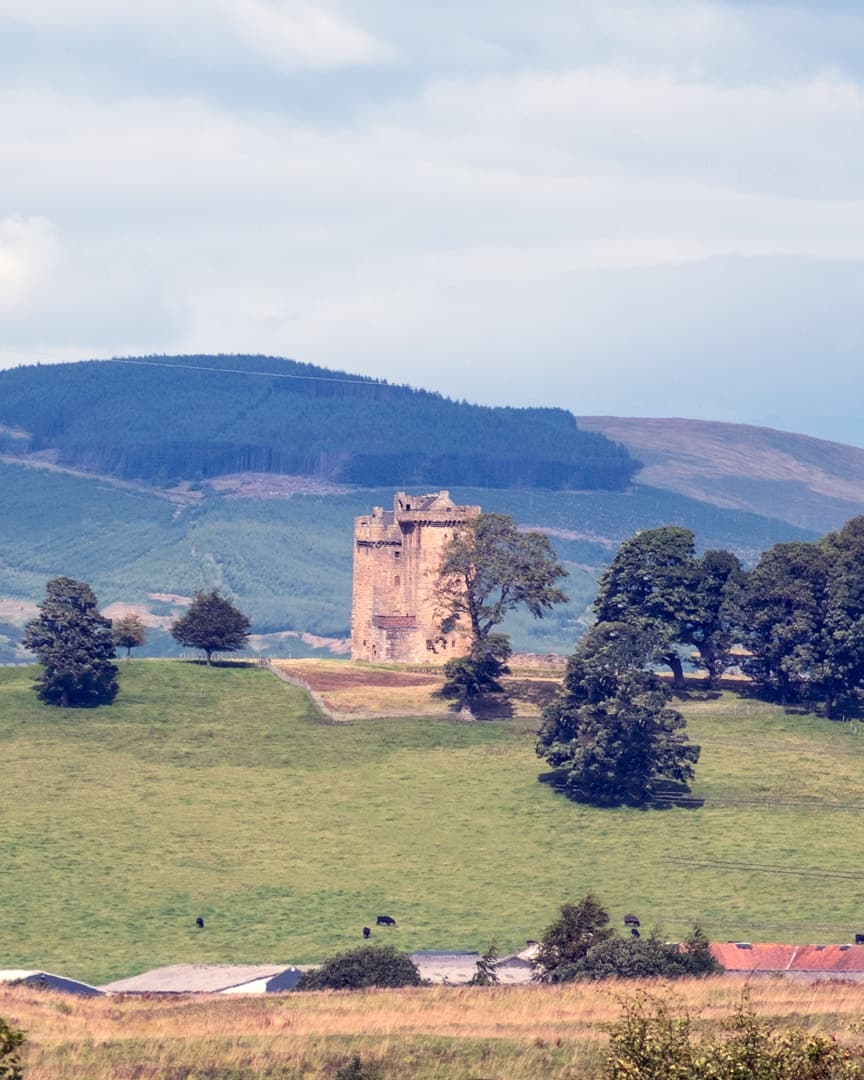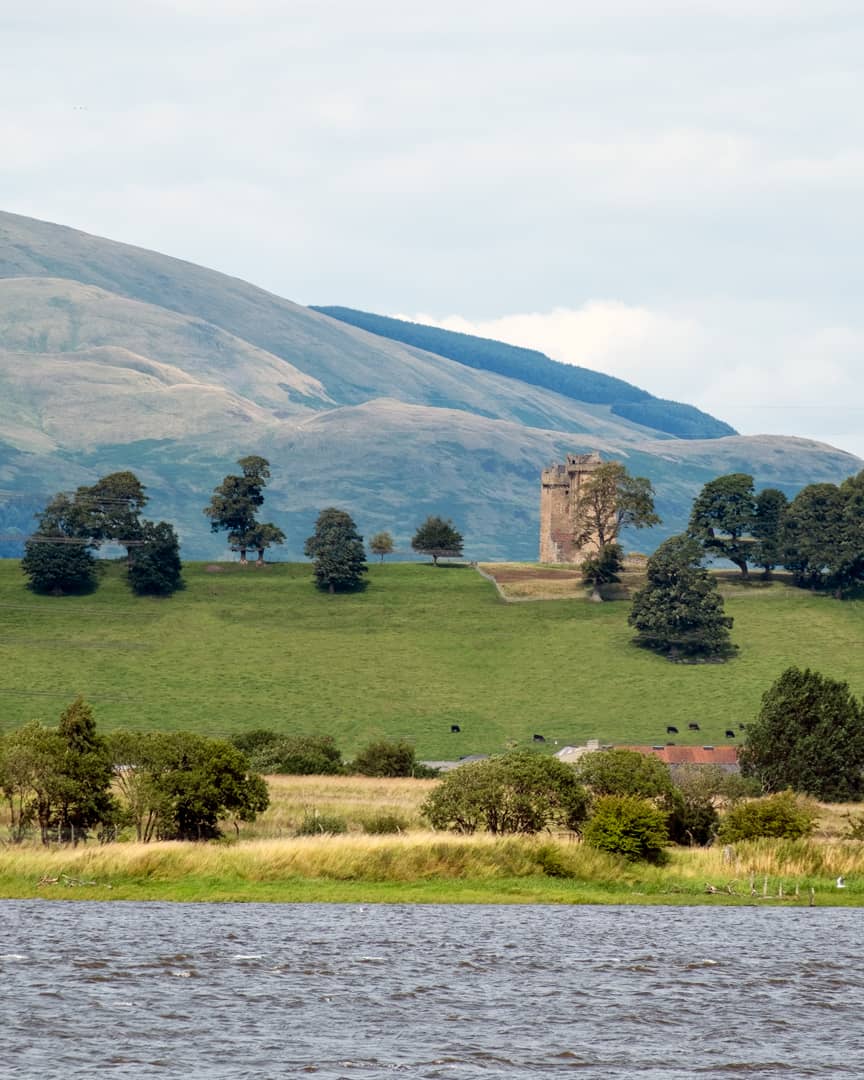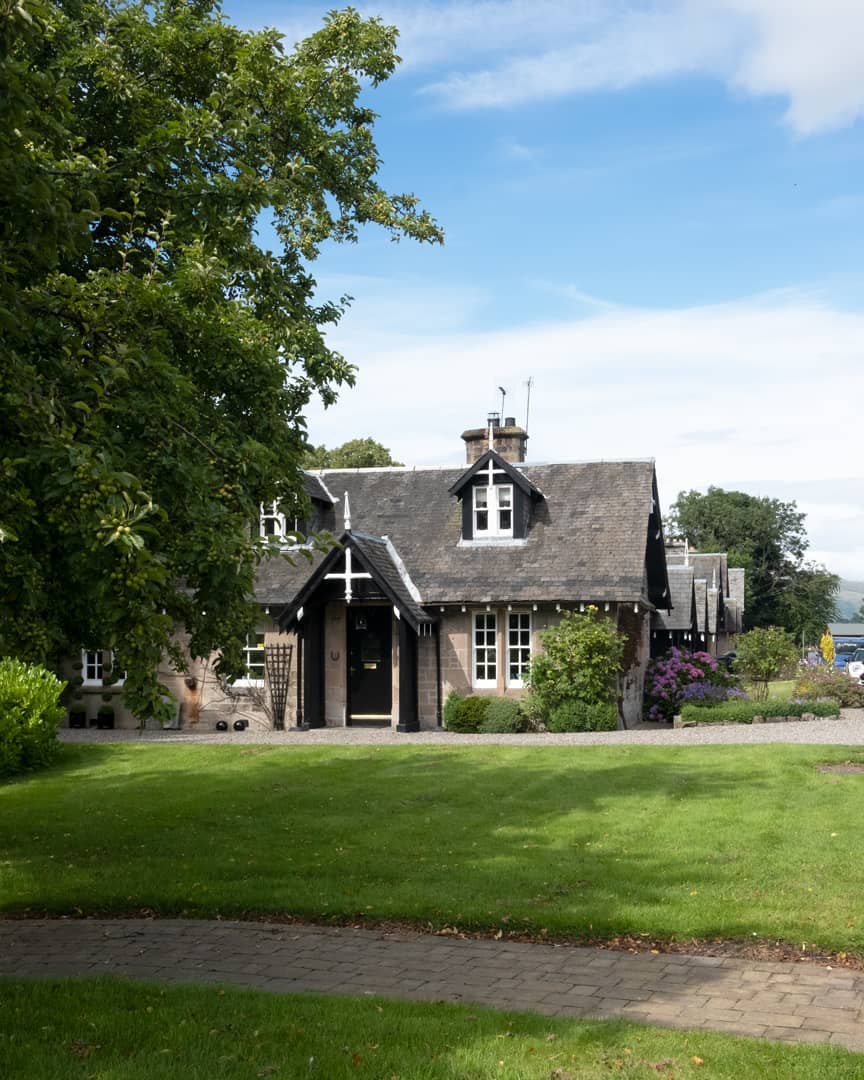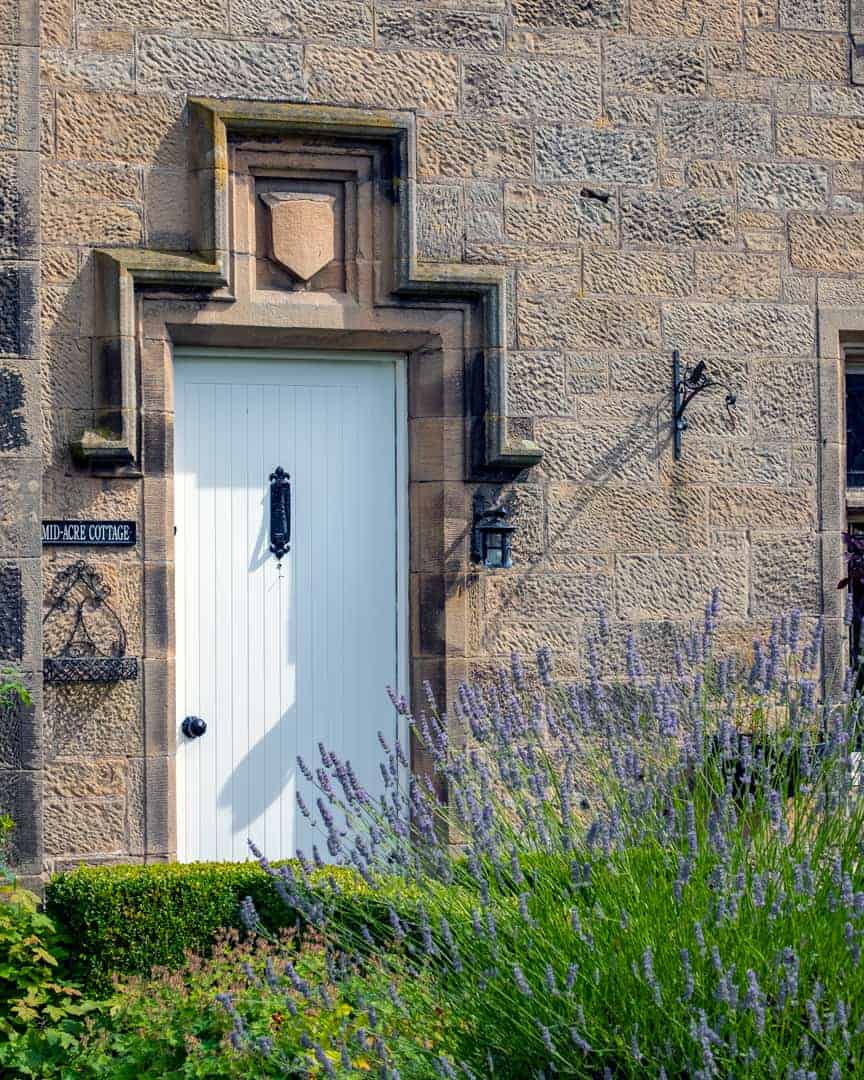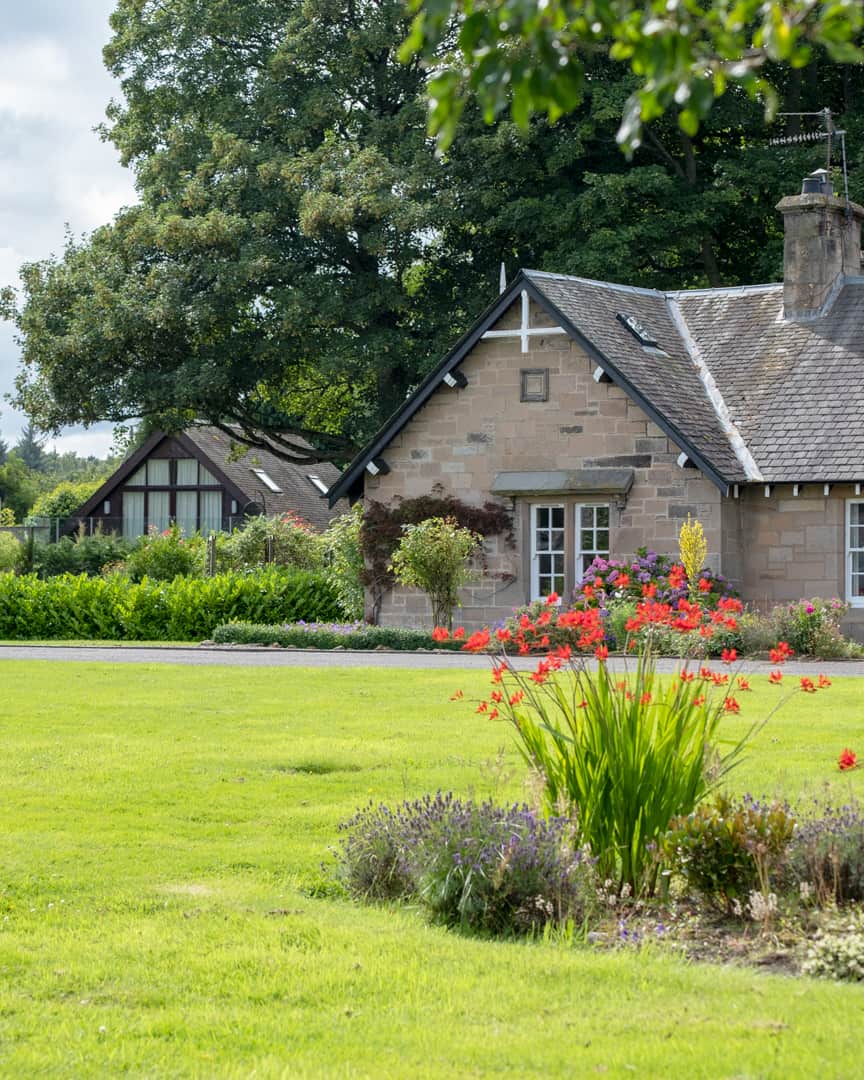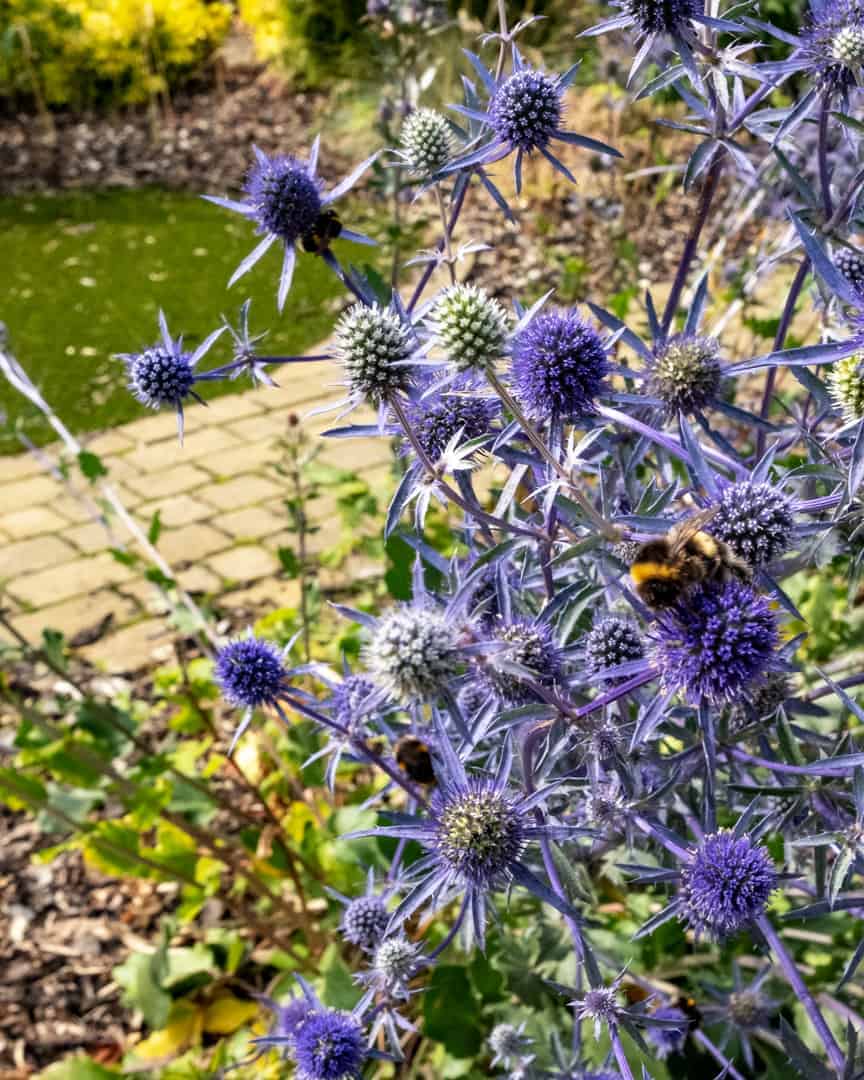Home to the quirkiest building in Scotland, the Dunmore Pineapple, the ruins of a grand mansion house and a beautiful planned village, let’s have a stroll at Dunmore Estate.
The park at Dunmore near Airth, is a stunning remnant 19th century designed landscape. Home in the 18th and 19th century to the Earls of Dunmore, the park was split up in the 1960s with the Pineapple now gifted to the National Trust for Scotland. The estate is full of walking trails and interesting ruins and follies – and is dog and bike friendly.
To visit the Pineapple and Dunmore Estate, we followed this Dunmore Pineapple and Estate walk from Walkhighlands.
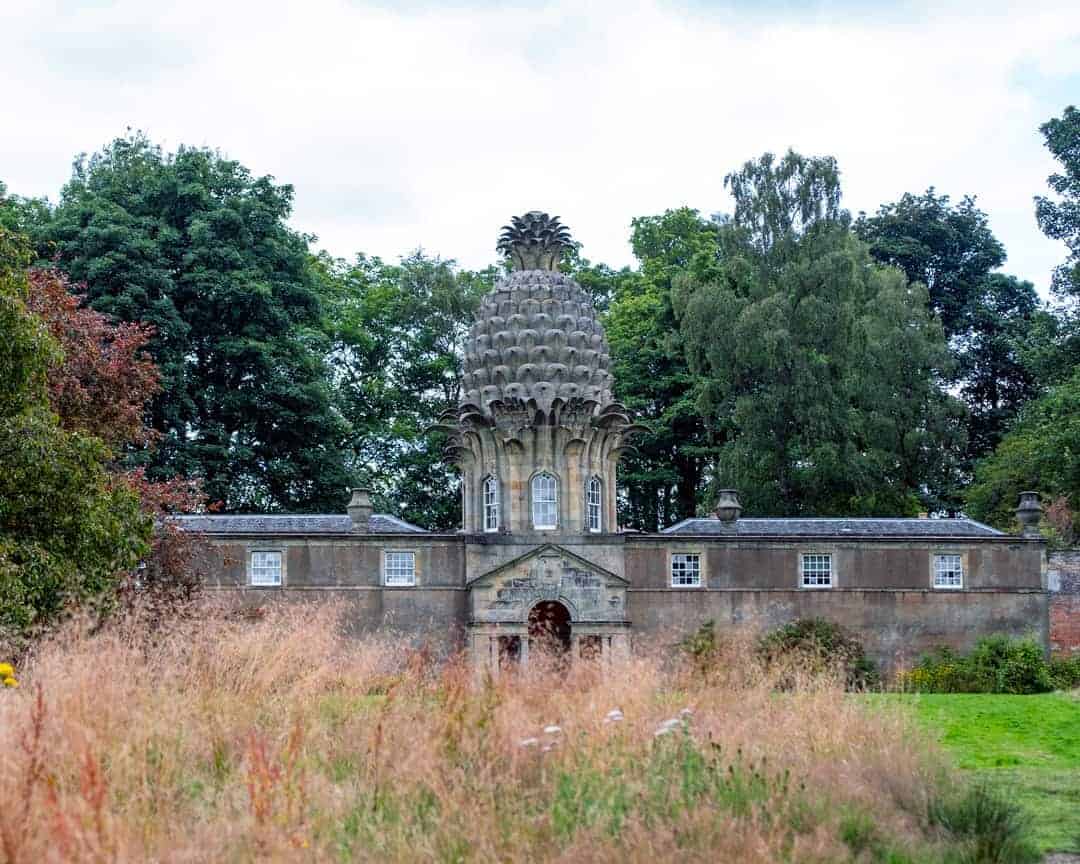
The Dunmore Pineapple and Walled Garden
I love a good folly and the pineapple at Dunmore is one of the UK’s best. Sitting in the Estate’s walled garden, the pineapple building once had glasshouses along its length.
Especially heated to grow exotic fruit and veg that could not be grown outdoors in the Scottish climate, the hothouses would even have grown pineapples – a very popular fruit.
The pineapple was added to the hothouses by the Earl of Dunmore as a summerhouse to enjoy the walled garden, probably in around 1776. To the rear of the pineapple are two bothy cottages which were once home to the estates’ gardeners.
Did you know you can now stay in the Pineapple?
To follow the walk, head into the walled garden and climb up to the front door of the pineapple before turning to your left. There is a door in the wall which takes you into the woods behind.
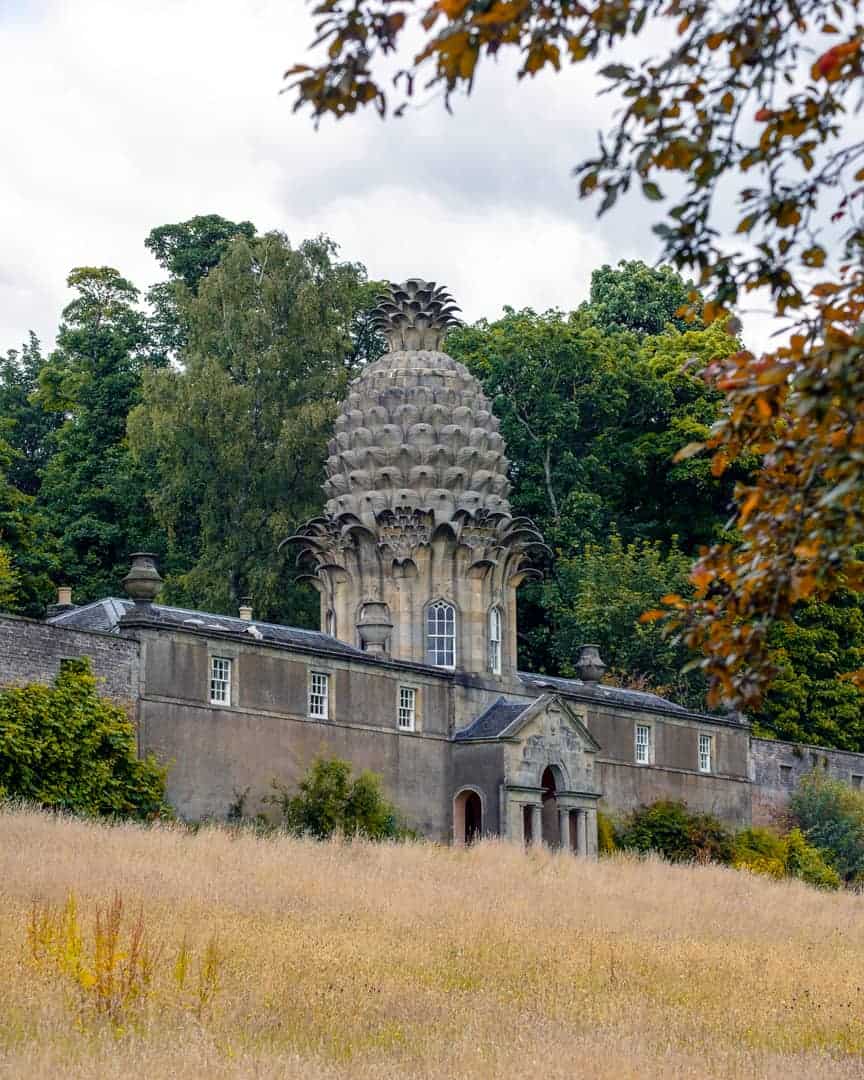
Dunmore House Stables
Follow the path through the wood until you come to track, turn right and follow the track until you come to Dunmore House Farm. Behind the farm is the old stable block for the estate.
You’d easily think the stables at Dunmore House were a church or other esclaiatal building but you’d be mistaken – it was actually designed to look like a Tudor castle. The building is now at risk and derelict. Always consider your own safety before exploring any derelict buildings.
Dunmore Park House
Now visible from the stables is Dunmore Park House. On his succession as earl in 1809, the 5th Earl of Dunmore commissioned a new house.
Built between 1820 and 1825 and designed in a Tudor-Gothic style by the architect William Wilkins, the mansion house at Dunmore Park is now a ruin. The Dunmore family departed the house in 1911 and it became a girls school in 1964 before being abandoned. All you can see from the path are the towers.
Dunmore Park House was used as a filming location for Outlander. The WW2 scenes of Claire as a nurse were filmed here. Again as the house is derelict, enter at your own risk.
Leaving the estate behind, carefully cross the busy main road and walk down the farm road towards the river, following the road around to the right with views of the Wallace Monument and the Clackmannan Tower, a 1300 tower house once visited by Robert the Bruce.
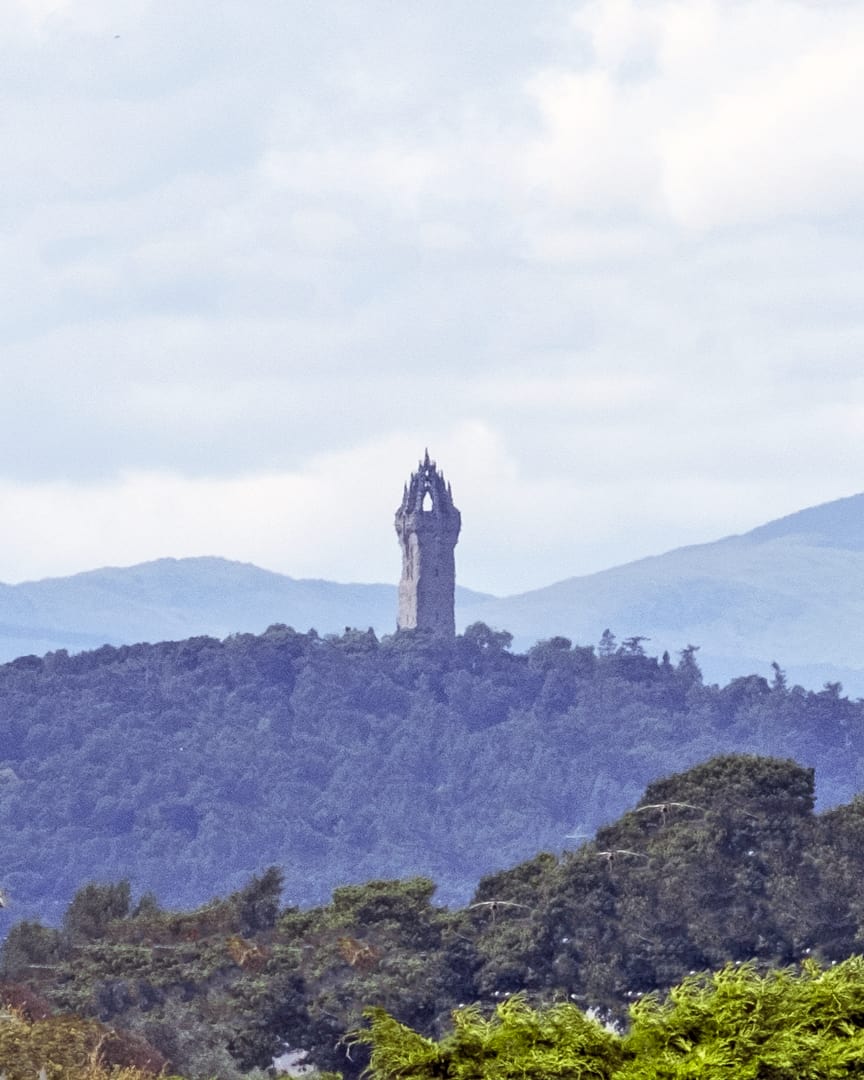
Dunmore Village
The next stop on the Dunmore Estate walk is Dunmore Village, which could compete for the prettiest village in Scotland.
A Land at Dunmore (then called Elphinstone Pans) was purchased in 1754 by John Murray, Earl of Dunmore from the Elphinstone Estate for £15,000. The village was developed by the Countess of Dunmore to house workers for the nearby Dunmore Park. The village comes complete with its own extremely cute Dunmore Bowling Club with its green in the centre of the houses.
When visiting Dunmore remember that the houses in the village are people’s homes!
Crossing back over the main road, walk back to the estate along a line of giant Sequioa trees which once guarded the entrance to Dunmore Park House. Behind the trees is a hidden castle and chapel. Yes, this estate has everything!
Elphinstone Tower (Dunmore Tower)
The Dunmore’s weren’t the first family on the estate. Before them was the Elphinstones in the 16th century. Elphinstone Tower was the tower house of the barony of Elphinstone before the estate was purchased in 1754 by John Murray, son of the 3rd Earl of Dunmore. The tower was used as the family crypt and a small chapel was built nearby.
From the tower follow the path back round to the car park.
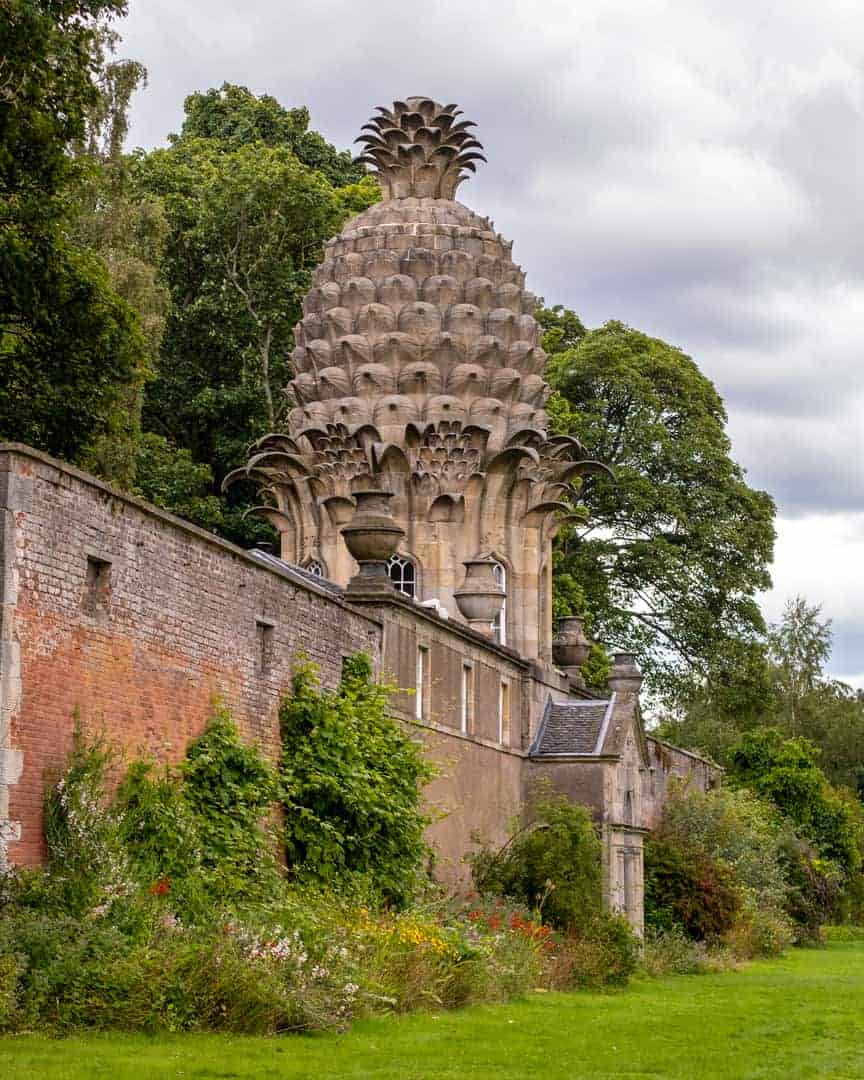
How to get to the Dunmore Pineapple
- The Pineapple is 1 mile west of the village of Airth and is signposted off the main road. Follow the rutted track past a couple of gatehouses to the very small carpark.
- Entry is free and the site is open all year. There are no toilets.
- The Pineapple folly itself not open to visitors.
- Follow this Dunmore Pineapple and Estate walk from Walkhighlands.
Love, from Scotland x

